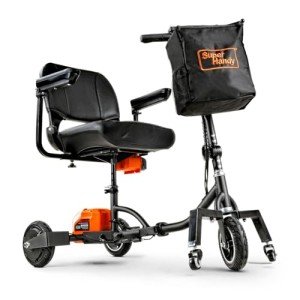Why All The Fuss About Mobility Devices?

Understanding Mobility Devices: Enhancing Independence and Quality of Life
In today's busy world, the desire for mobility is universal. Nevertheless, folding mobility scooters with adjustable speed or age-related obstacles can impede movement, leading to an ongoing look for support. Mobility devices work as important tools to enhance independence, enhance lifestyle, and make it possible for people to engage completely in their communities. This article offers a thorough summary of mobility devices, including their types, features, choice criteria, and more.
Types of Mobility Devices
Mobility devices vary from basic aids to complicated equipment, customized to meet various requirements. Below is a table summarizing common kinds of mobility devices:
| Type of Device | Description | Suitable For |
|---|---|---|
| Walkers | Four-legged assistance devices that offer exceptional stability while strolling. | Individuals needing additional assistance. |
| Canes | Single or three-legged sticks that enhance balance and assistance walking. | Those with slight mobility problems. |
| Wheelchairs | Seats mounted on wheels, available in handbook and electric versions. | People with limited or no mobility. |
| Scooters | Electric automobiles designed for outside use and ease of navigation. | Those who can't walk long distances. |
| Crutches | Devices that help individuals transfer weight far from a hurt leg. | Individuals recuperating from leg injuries. |
| Rollators | Walkers with wheels, seats, and brakes for enhanced mobility. | Users requiring rest alternatives while walking. |
| Raise Chairs | Reclining chairs that assist users in standing and sitting down. | Seniors or those with mobility restraints. |
| Mobility Scooters | Small electric vehicles for minimal mobility, often used outdoors. | Individuals requiring support over cross countries. |
Key Features of Mobility Devices
When selecting a mobility gadget, several key features should be considered to make sure optimal functionality and ease of use:
- Weight Capacity: Understanding the gadget's weight limitation is vital for security and efficiency.
- Adjustability: Devices ought to be adjustable in height and width to fit the user conveniently.
- Mobility: Lightweight and foldable options are vital for users who travel or need transport.
- Stability and Safety: Look for features like anti-tip wheels and strong structures to enhance security.
- Alleviate of Use: Simple systems and easy to use styles can make a considerable distinction in daily usage.
- Convenience: Ergonomic styles and padded seats can enhance the user experience.
Choosing the Right Mobility Device
Choosing the best mobility gadget can be a challenging job. Here are some steps to assist the decision-making procedure:
- Assess Needs: Evaluate the person's mobility obstacles and day-to-day activities.
- Speak with a Professional: Engage health care experts who can offer suggestions based on the individual's physical condition.
- Trial Options: If possible, trial different devices to identify convenience and functionality.
- Review Budget: Consider the expense of the device, consisting of any additional functions or modifications required.
- Research Options: Determine the very best brands and designs by checking out reviews and contrasts.
Table: Comparative Analysis of Popular Mobility Devices
| Gadget | Benefits | Downsides |
|---|---|---|
| Walkers | Outstanding stability, promotes strolling. | Bulky, might limit movement in small areas. |
| Canes | Lightweight, enhances balance. | May not supply sufficient support for extreme mobility issues. |
| Wheelchairs | Ideal for those with significant mobility constraints. | Can be troublesome, especially in indoor environments. |
| Scooters | Great for outside use, easy to maneuver. | Restricted indoor functionality, heavier. |
| Rollators | Supplies rest choice, easy to move. | May require more area than conventional walkers. |
| Raise Chairs | Comfy, assists shift from sitting to standing. | More expensive, larger footprint. |
Often Asked Questions (FAQs)
1. What is a mobility device?
A mobility device is any tool designed to help people in moving and browsing their environment. This includes walkers, wheelchairs, scooters, and crutches.
2. How do I know which mobility device is best for me?
Consider your specific mobility difficulties, physical capabilities, and way of life needs. Consulting with health care professionals can likewise provide customized recommendations.
3. Are mobility devices covered by insurance?
Lots of insurance plans, consisting of Medicare, may cover certain mobility devices. It's essential to consult your insurance coverage provider for particular coverage details.
4. Can I rent a mobility gadget rather of buying one?
Yes, numerous medical supply stores and drug stores offer leasings for mobility devices. This choice is advantageous for people with short-term mobility issues.
5. How can I preserve my mobility gadget?
Regular maintenance is important. It consists of cleaning the device, looking for wear and tear, and guaranteeing all parts are operating correctly.
The Impact of Mobility Devices on Quality of Life
Mobility devices substantially enhance the lifestyle for individuals with restricted mobility. They promote independence, encourage social interaction, and boost access to essential services and leisure activities.
- Increased Independence: Users can browse their communities, participate in occasions, and engage in hobbies without depending on others.
- Social Engagement: Mobility devices assist in participation in celebrations, thus combating feelings of seclusion.
- Improved Safety: Devices offer stability and lower the danger of falls, promoting user confidence.
Mobility devices are more than just tools for motion; they are gateways to independence and quality living. By comprehending the different types of mobility aids readily available, their key functions, and factors to consider for picking the best gadget, people can make educated choices about their mobility needs. Ultimately, the right mobility gadget can cause a more active, satisfying life. Whether it's a walker, wheelchair, or scooter, the right choice contributes significantly to improving the mobility and self-reliance of users.

